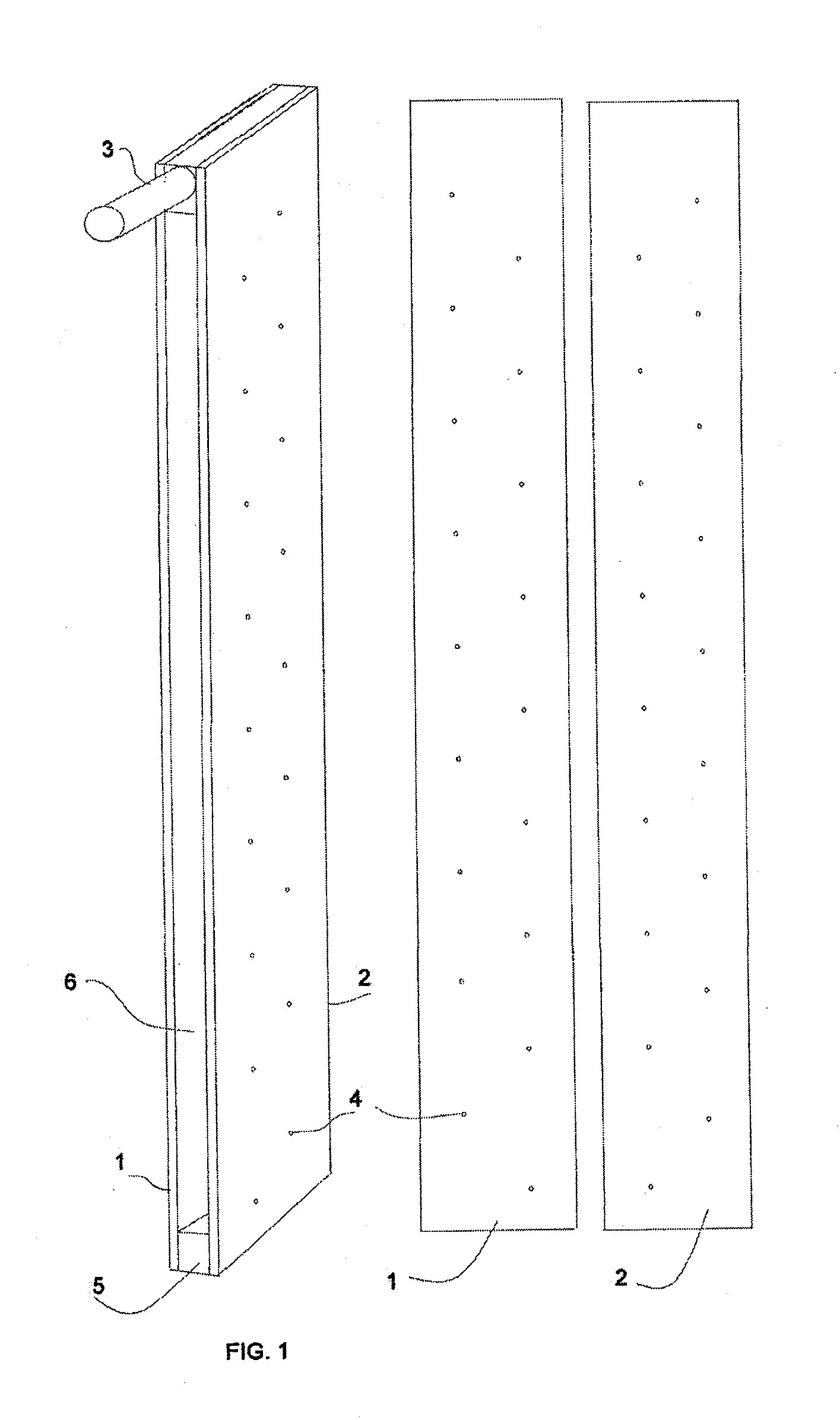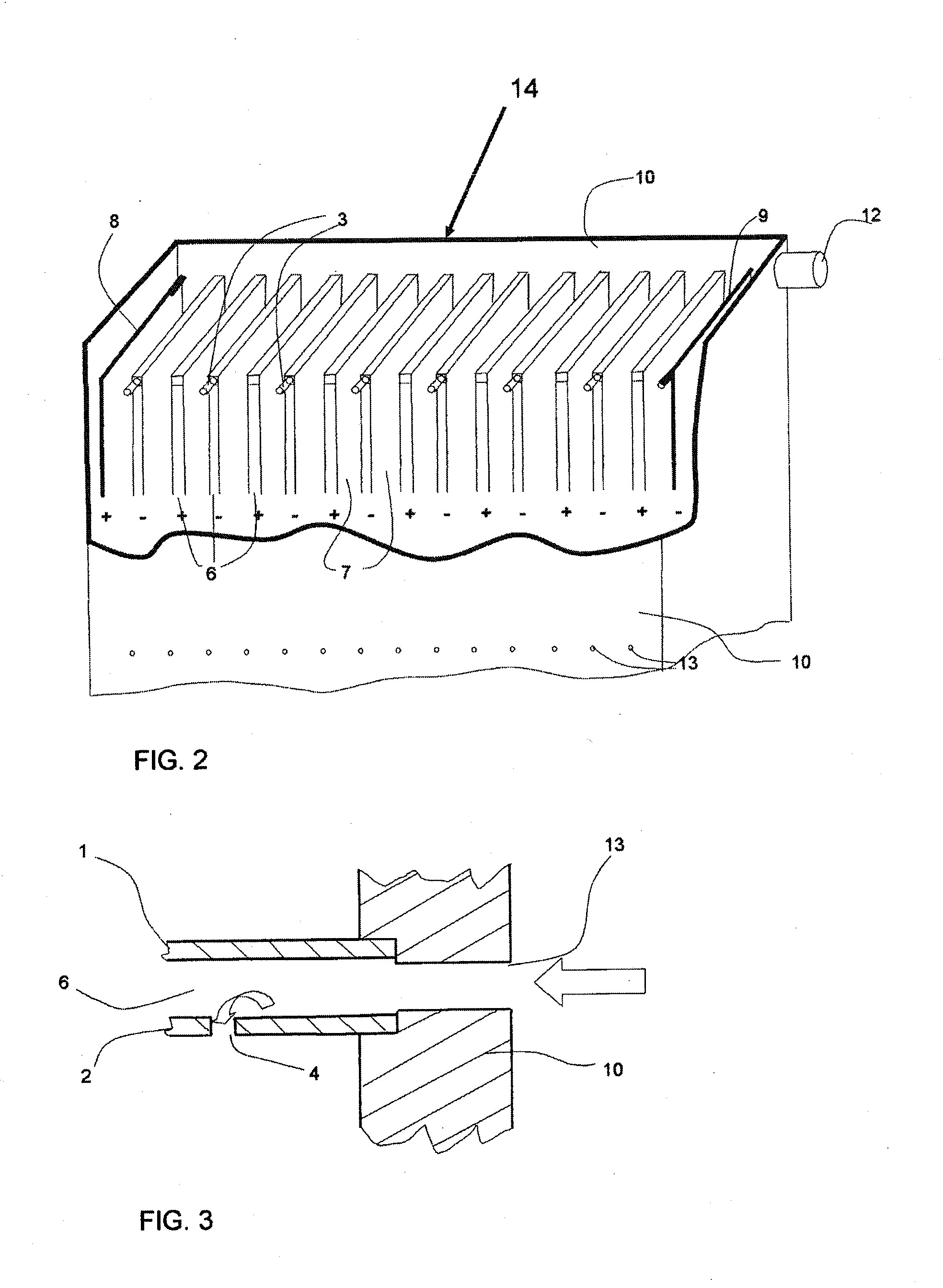Method and apparatus for electrochemical treatment of contaminated water or wastewater
- Summary
- Abstract
- Description
- Claims
- Application Information
AI Technical Summary
Benefits of technology
Problems solved by technology
Method used
Image
Examples
example
[0057]Waste water from a car wash operation, which contains oil and fat residues, suspended particles and metal residues as microparticles and in dissolved form, is treated with the apparatus of FIG. 2. The apparatus contains four electrodes of type in FIG. 1 made of iron. The dimensions were as follows: Width 150 mm, height 600 mm, hollow spacing in the electrode 8 mm and the interelectrode distance was 15 mm. The capacity used was 80 L / h (L=liter). Part of the purified water after the separation of the flock was circulated through the pockets 6 in the electrodes of FIG. 1. The amount of the circulated water was 10 L / h. The electrodes were connected in parallel and the current was 31 A which means 68.8 A / m2. Peristaltic pumps were used to meter the flows and to cause the pulsating effect for the flows. A hole for the semiconductor pressure detector was made to indicate the pressure variations in the pockets 6 in each of the electrodes. The pulsating pressure varied cyclically betwe...
PUM
| Property | Measurement | Unit |
|---|---|---|
| Fraction | aaaaa | aaaaa |
| Fraction | aaaaa | aaaaa |
| Fraction | aaaaa | aaaaa |
Abstract
Description
Claims
Application Information
 Login to View More
Login to View More - R&D
- Intellectual Property
- Life Sciences
- Materials
- Tech Scout
- Unparalleled Data Quality
- Higher Quality Content
- 60% Fewer Hallucinations
Browse by: Latest US Patents, China's latest patents, Technical Efficacy Thesaurus, Application Domain, Technology Topic, Popular Technical Reports.
© 2025 PatSnap. All rights reserved.Legal|Privacy policy|Modern Slavery Act Transparency Statement|Sitemap|About US| Contact US: help@patsnap.com



